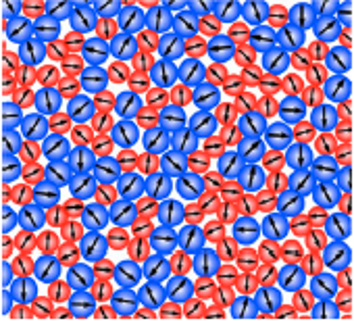
In dense configurations of active systems such as crowded bacterial colonies and confluent cell monolayers, interplay between short-range steric, mechanical, and self-propulsive forces leads to new phenomena for self-organized collective motion. Active systems undergo a form of dynamic arrest when crowding and activity compete, reminiscent of what observed in colloidal and molecular fluids undergoing a glass transition. However, the influence of activity on slowing down of dynamics and particularly the mechanical properties of active matter remains an open problem.
In this project we will study the collective dynamics and mechanical properties of dense amorphous active matter using computer simulations of a minimal model of self-propelled particles and explore the new phenomenology that emerges as a result of competition between activity and crowding.
Berthier et. al. J. Chem. Phys. 150, 200901 (2019).
Henkes et. al. Nature Communications 11, 1405 (2020).
Mandal et. al., Nature Communications 11, 2581 (2020)